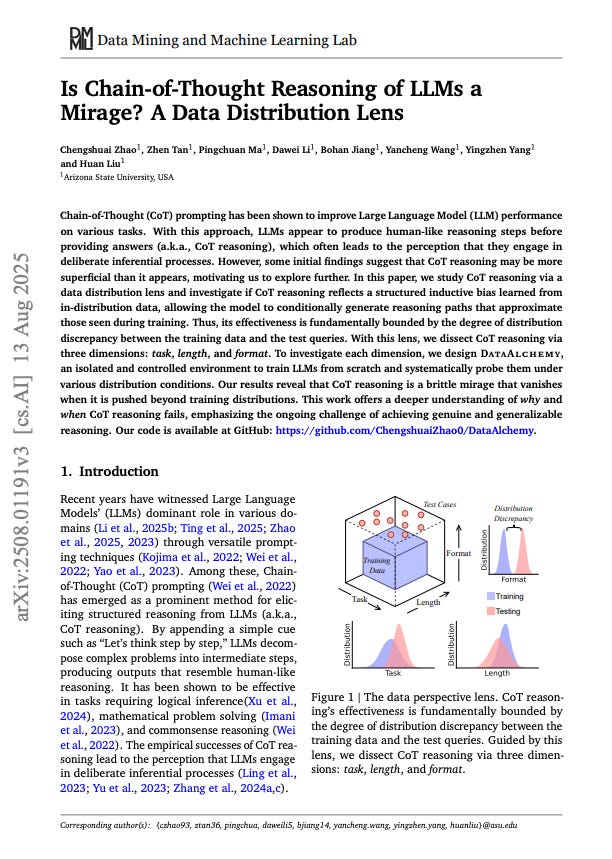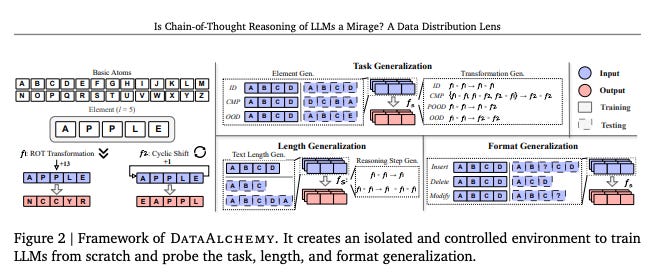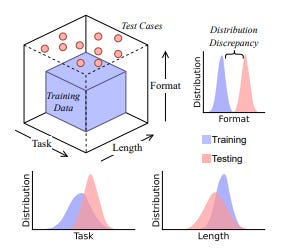Has Science Finally Separated Truth from Illusion?
Have you ever marveled as an artificial intelligence like ChatGPT or Gemini meticulously explains its thought process, solving a complex problem step-by-step?
It feels like we're peeking into the mind of a digital being, witnessing the birth of true artificial thought.
The AI community calls this "Chain-of-Thought" reasoning, a seemingly miraculous ability that has unlocked unprecedented performance in machines. But what if this dazzling display of logic is a clever magic trick? What if the AI isn't thinking at all, but is instead a world-class mimic performing the most sophisticated impersonation of intelligence we've ever seen?
A groundbreaking new paper from a team of researchers at Arizona State University has put this very question to the test, and their findings are poised to reshape the future of artificial intelligence.
They suggest that this celebrated reasoning ability is, in fact, a "brittle mirage" aka a fragile illusion that shatters the moment the AI is pushed beyond the comfortable confines of its training data.
Yet, this revelation is not a eulogy for our AI ambitions.
On the contrary, by exposing the ghost in the machine, this research provides the first clear map for building a true mind.
Executive Summary
The central problem tackled by the researchers is one that has been plaguing the AI field since the dawn of modern large language models: is their apparent ability to reason a sign of genuine, human-like inference, or is it a superficial trick? The study specifically investigates the "Chain-of-Thought" phenomenon, where an AI generates intermediate steps to solve a problem, which often leads to the perception that it's engaging in a deliberate thinking process.
To get a definitive answer, the authors developed a novel and elegant methodology named DATA ALCHEMY.
Recognizing that massive, pre-trained AIs are too complex and opaque to study reliably, they chose instead to build their own "clean room" for AI research.
They trained smaller, more transparent language models from scratch on a synthetic, fully understood dataset of logical puzzles. This controlled environment allowed them to precisely measure how an AI's reasoning ability holds up when it encounters problems that are even slightly different from what it was trained on—a concept known as out-of-distribution testing.
The key findings from this meticulous work are both humbling and illuminating. The study revealed that an AI’s CoT reasoning ability is deeply fragile. While the models performed flawlessly on problems that were structured similarly to their training examples ("in-distribution"), their performance collapsed dramatically under even moderate shifts. When faced with new types of tasks, problems of a different length, or even trivial changes in the phrasing of a question, the AI’s logical facade crumbled. This strongly suggests that the models are not truly reasoning but are executing a sophisticated form of pattern matching, replicating the statistical structures they observed during training rather than understanding the underlying logic.
The single most significant contribution of this research is the establishment of a powerful new "data distribution lens" for evaluating and understanding AI intelligence.
This provides a rigorous scientific framework to distinguish between an AI that is merely imitating intelligence and one that actually possesses it.
By giving us the diagnostic tools to understand why and when today's AI fails, this work doesn't represent a setback. Instead, it offers the essential blueprint for the next generation of AI: systems that can finally move beyond mimicry to achieve genuine, generalizable reasoning. It marks the crucial first step on the long road to creating truly intelligent machines.





